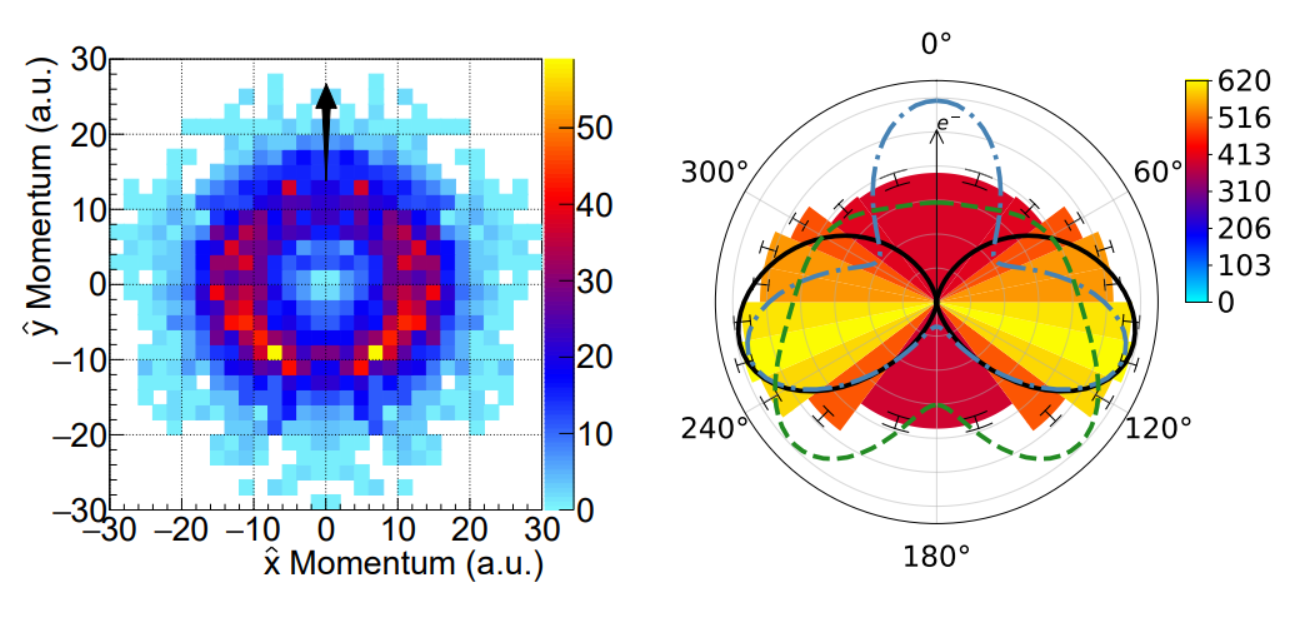Investigating resonant low-energy electron attachment to formamide: dynamics of model peptide bond dissociation and other fragmentation channels
Published in Phys. Rev. Research, 2021
Recommended citation: G. Panelli, B. Griffin, K. Swanson, A. Moradmand, T. Weber, T.N. Rescigno, C.W. McCurdy, D.S. Slaughter, & J.B. Williams. Investigating resonant low-energy electron attachment to formamide: Dynamics of model peptide bond dissociation and other fragmentation channels. Phys. Rev. Research 3, 013082 (2021). 10.1103/PhysRevResearch.3.013082
 We report experimental results on three-dimensional momentum imaging measurements of anions generated via dissociative electron attachment to gaseous formamide. From the momentum images, we analyze the angular and kinetic energy distributions for NH2−, O−, and H− fragments and discuss the possible electron attachment and dissociation mechanisms for multiple resonances for two ranges of incident electron energies, from 5.3 eV to 6.8 eV, and from 10.0 eV to 11.5 eV. Ab initio theoretical results for the angular distributions of the NH2− anion for ∼6 eV incident electrons, when compared with the experimental results, strongly suggest that one of the two resonances producing this fragment is a 2A'' Feshbach resonance.
We report experimental results on three-dimensional momentum imaging measurements of anions generated via dissociative electron attachment to gaseous formamide. From the momentum images, we analyze the angular and kinetic energy distributions for NH2−, O−, and H− fragments and discuss the possible electron attachment and dissociation mechanisms for multiple resonances for two ranges of incident electron energies, from 5.3 eV to 6.8 eV, and from 10.0 eV to 11.5 eV. Ab initio theoretical results for the angular distributions of the NH2− anion for ∼6 eV incident electrons, when compared with the experimental results, strongly suggest that one of the two resonances producing this fragment is a 2A'' Feshbach resonance.
